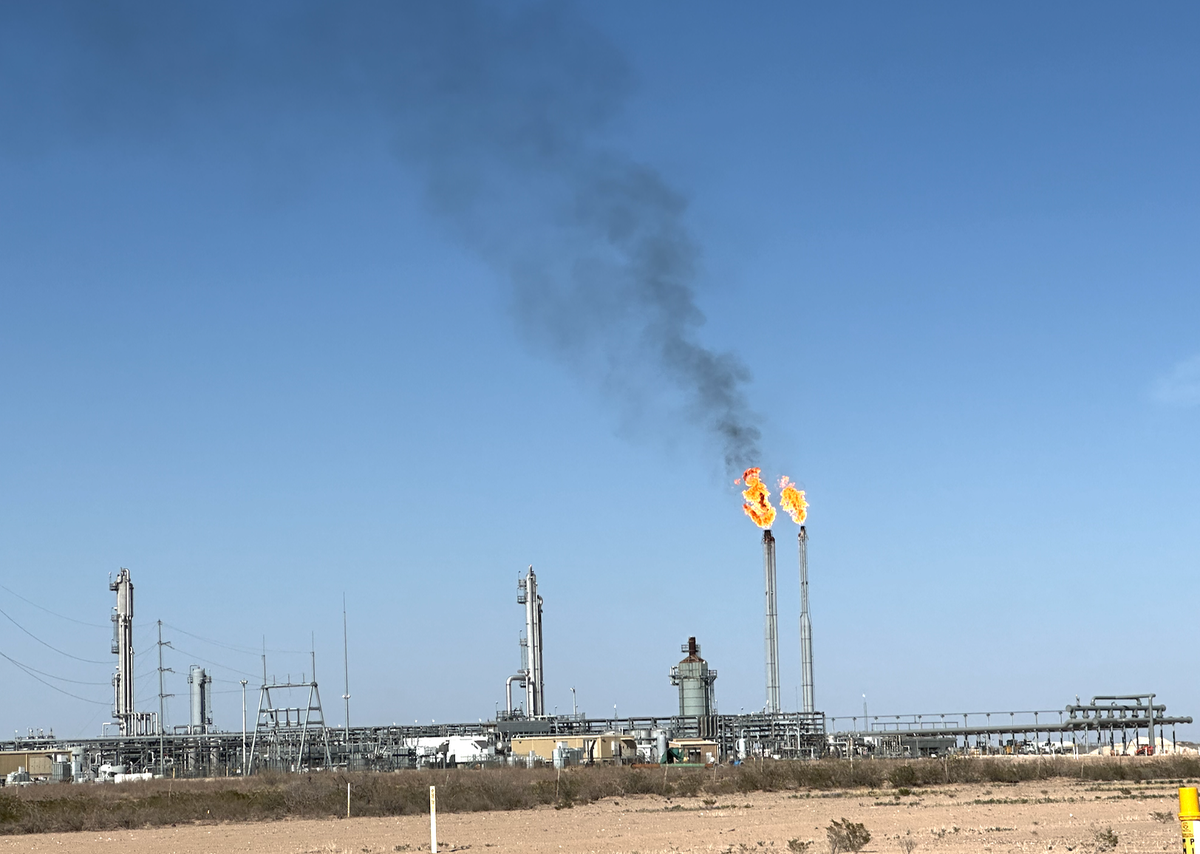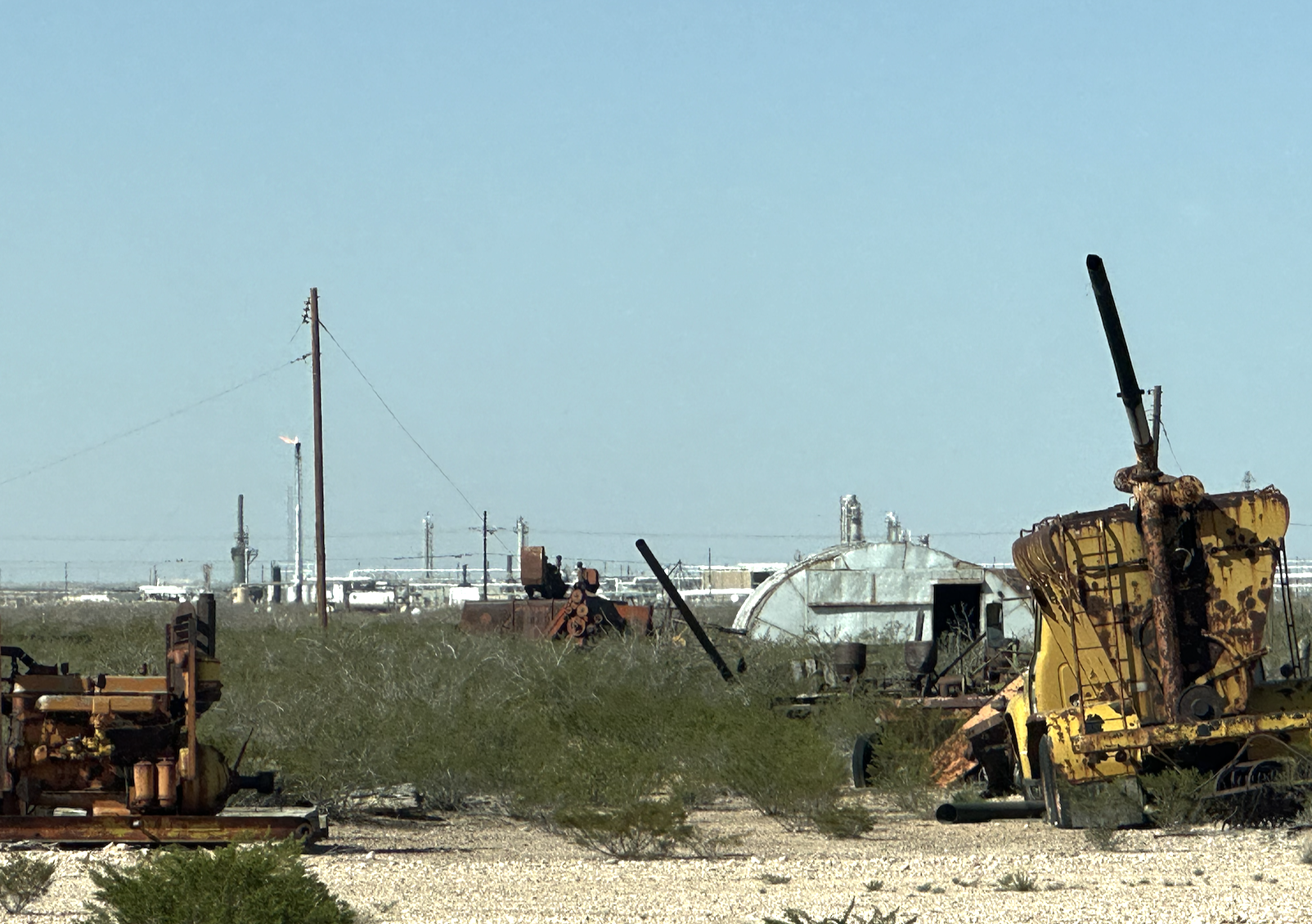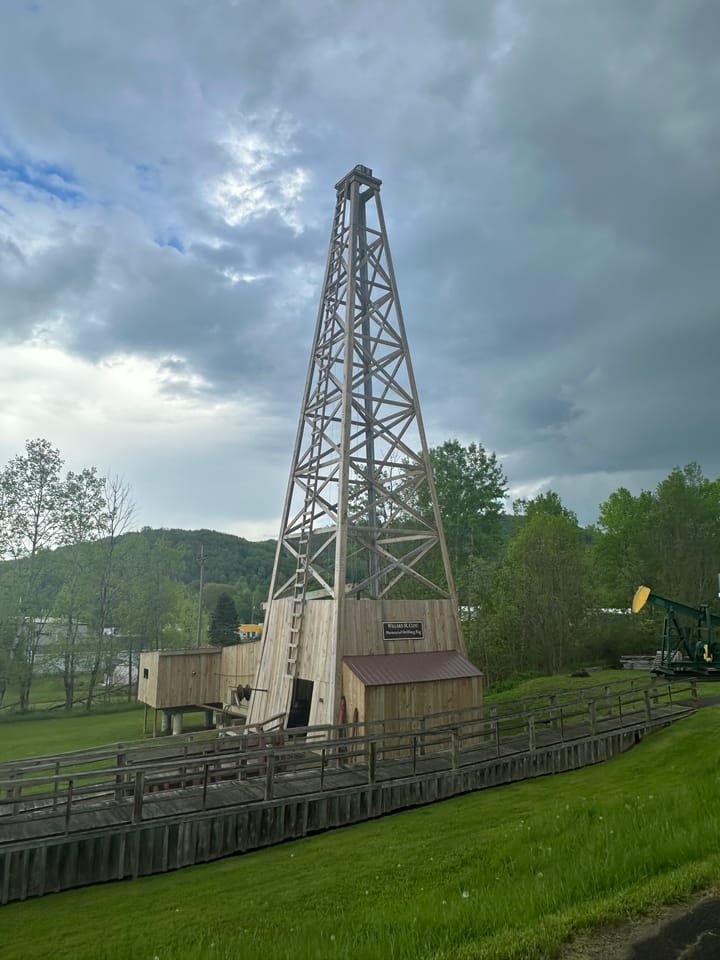Oil Industry Methane Pollution Is Business as Usual, Not Accidental
Leaks are not driving oil and gas methane pollution. Methane pollution is mostly due to normal oilfield operation.

The oil industry is once again winning the messaging war to mislead the public about the true nature of its business. Methane is getting significant media attention these days due to the launch of a new methane-detecting satellite and new U.S. methane regulations that may require some companies to pay fines for large methane emissions. However, almost all of the media coverage is making the mistake of talking about methane “leaks” or “fugitive emissions” being the main problem, when that is far from the truth.
Recent examples of this in headlines include “Fossil fuel firms must plug methane leaks to meet climate targets, warns watchdog,” and “Methane leaks from US oil and gas are triple government estimates”
While this is certainly what the oil industry wants you to believe, the facts show that the majority of methane pollution from the U.S. shale oil industry is due to intentional venting and flaring of methane which are not accidents but part of normal oil field operations. The industry definitely has major methane leaks at times. Wells blow out. Pipelines are accidentally damaged and leak. Lack of investment in safety results in predictable disasters. But the main problem with oil and gas production is not that there are catastrophic disasters that result in large leaks but that methane pollution is largely due to oil and gas companies following industry “best practices” of how to make money producing shale oil. This is what S&P Global refers to as “a normal part of oilfield equipment operation.”
Video: Normal oilfield equipment operation with emissions.
This normal part of oilfield equipment operation is what is causing much of the methane emissions in the Permian oil field in the U.S. An analysis by CERES estimated that leaks or “fugitive emissions” accounted for less than 10% of the total emissions resulting from oil and gas production (see graphic). The problem isn’t leaks. The problem is the standard operating procedures of the “normal” extraction of oil and gas from the ground.
The International Energy Agency (IEA) also quantified sources of methane emissions in U.S. oil production in its Global Methane Tracker 2024. “Unconventional upstream oil production” is how they describe the fracked shale oil production in the U.S. and it is the worst for methane emissions. While the IEA has a higher value for leaks (fugitive emissions) than CERES, vented emissions are still the dominant source of methane pollution.
Puzzling Claims from Environmental Protection Agency
It is understandable that people might be optimistic about the latest developments in quantifying and regulating methane emissions from U.S. oil and gas operations. There is excitement about both the new methane detecting satellites and the new methane fees for the worst offenders in the oil and gas industry. However, the satellites are just confirming what we’ve known for years. I wrote this article four years ago: New Satellite Data Reveals Dangerous Methane Emissions in Permian Region. In the article I report that satellites showed much higher methane emissions in the Permian than were being self-reported by oil companies and that the new data confirmed Dr. Robert Howarth’s work on methane emissions. Four years later after a lot more confirmation, emissions continue and the industry is still attacking Howarth’s work.
While the methane venting and flaring in the Bakken oil field in North Dakota was off the charts when the Bakken was booming (in 2012 they flared a third of all gas produced), the Bakken is now well into decline ands the Permian region of Texas and New Mexico is by far the largest oil play in the U.S. and also leads the world in total emissions. If the U.S. is going to do anything meaningful about its methane emissions, it must address the Permian. We’ve known this for years. We also know that the information from satellites from 2020 has not improved methane emissions in the Permian.
In the past few years, the Permian experienced significant consolidation so now much of it is owned by major oil companies like Exxon, Occidental, Chevron and Pioneer (soon to be Exxon). That is a major change and would appear to make it easier to hold these big players accountable versus chasing down hundreds of small companies for violations. Which makes the recent messaging from the Environmental Protection Agency quite troubling.
“Leading oil and gas companies already meet or exceed performance levels set by Congress under the climate law, meaning they will not have to pay the proposed fee, [EPA Administrator] Regan and other officials said.”
The Permian is the leading producer of methane emissions in America. The biggest operators in the Permian are the “leading oil and gas companies” and yet the EPA is telling us that they already meet or exceed methane performance levels. So, apparently no violations or fees for them despite the obvious flaw in that analysis.
In a 2022 article on the proposed methane fees, the Financial Times reported both that the industry “condemned” the proposal but also that four of the top five methane emitters in the U.S. oil industry were major companies (Exxon, Occidental, ConocoPhillips and Chesapeake).
And yet, the EPA does not expect its regulations to require the likes of Exxon to change their behavior regarding methane emissions. Now, there is an argument to be made (which I will be making in the near future) that this is in large part due to the massive loopholes in those regulations. However, if the major oil producers in the Permian don’t change their behavior, there will not be meaningful reductions in methane emissions in the Permian. The math is pretty simple. And yet we are told they are expecting 80% reductions by 2030. How exactly will that happen? I’m 100% confident it won’t.
The Fatal Flaw in Permian Methane Regulations
A well-intentioned argument made by many is that most of the known solutions to reducing methane emissions can be paid for by capturing that methane and selling it on the market. Afterall, the global methane (natural gas/LNG) market is buying plenty all of the time. The argument is based on the idea that no industry would intentionally throw away a valuable product.
The flaw in this argument when it comes to the Permian oil industry is that the natural gas that comes out of the ground with the oil they want is not a valuable product but often instead is an expense. So the oil companies in the Permian could invest in equipment to capture all of the methane but they would likely have to sell that at a loss. From a business perspective, it makes a lot more sense to vent or flare that methane. So that is what they do. As I wrote about the industry in 2019, “If the industry can make money capturing the gas, it will. If not, it will continue flaring.”
This recent Inside Climate News article does a great job of explaining the problem which is summed up in the article by Sharon Wilson of Oilfield Witness, “They have to get rid of the gas because it’s going to cost them money to get it in a pipeline.”
When I was recently in the Permian with Sharon, her FLIR camera revealed clouds of emissions over the Waha gas processing facilities where Permian natural gas is gathered and priced (it was negatively priced while I was there). What we were seeing was “a normal part of oilfield equipment operation.”
And this problem will only get worse. A reality of shale oil fields is that as they age, they experience an increase in gas to oil ratio (GOR). This means for each barrel of oil, more gas comes out of the ground. It’s good to remember that Permian oil producers don’t want this gas. And the Permian is getting gassier. Expecting the industry to spend money to capture this additional gas is naive. Oil production appears to be peaking in the Permian. If the companies didn’t choose to invest in the infrastructure for gas capture when the Permian was growing rapidly, why would we expect them to do so if the field is now peaking? They won’t.
For years the industry’s self-reported methane emissions numbers were far below what satellites started revealing back in 2020. And the industry had its own satellite data before that from a company that claims to have the most advanced methane detection satellites. It is interesting that the first methane satellite was launched in 2016 by this company that makes money selling the data to the oil and gas industry and claims to have much better data than any public satellites. It seems highly likely the U.S. oil producers have known the real methane numbers for years, but continued to self-report much lower numbers. How bad a problem has it been in the Permian? Pioneer Resources CEO Scott Sheffield has been saying it needs to be addressed since 2019! I bet Scott had seen the satellite data at that point. This is the same guy who is about to get a seat on Exxon Mobil’s board of directors. You can bet that he won’t be mentioning this topic much anymore with his new employment at Exxon.
It is increasingly clear that regulations and satellites won’t drive the rapid changes we need in reducing methane emissions from the oil and gas industry. One good reason is that the industry will fight anything that cuts into profits. The state of Texas is suing over the methane regulations. The oil industry wants us to believe that they just need to plug some leaks. The reality is the economics of the oil business only works in the Permian if they can dump the methane into the atmosphere, as they have been doing for a decade. The only realistic way that methane emissions will go down in the Permian is when the industry loses the license to conduct business as usual. The industry will not volunteer to do this and will keep attacking the science and scientists. Texas will not do this. The current federal rules will not do this. It will require new federal policies based on science and leaders who understand what is at stake.




Comments ()